View the spoiler for my guess at what I think it might be, but please first come to your own conclusion before looking at mine — I don't want to bias your guess.
My guess
Psilocybe cyanescens
They were found in mid-november in the Salish Coast region of Cascadia. They were growing out of woodchips composed of a mixture of western hemlock (majority), and western red cedar.
Side view of one full mature specimen:

A group with a sample of the substrate (the cap appears to be umbonate):

A closeup side view, and internal view of the stem (it appears to be hollow):
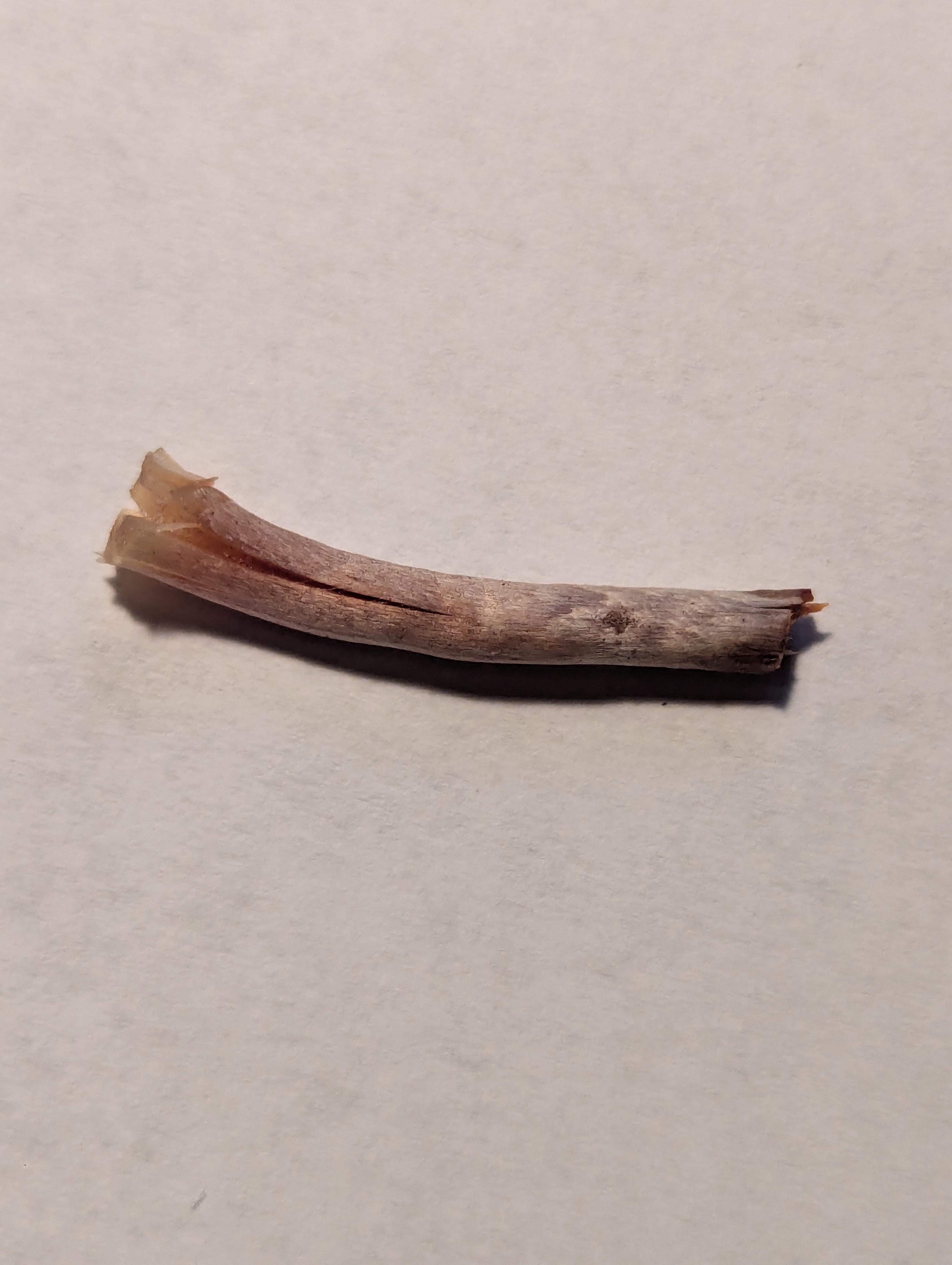
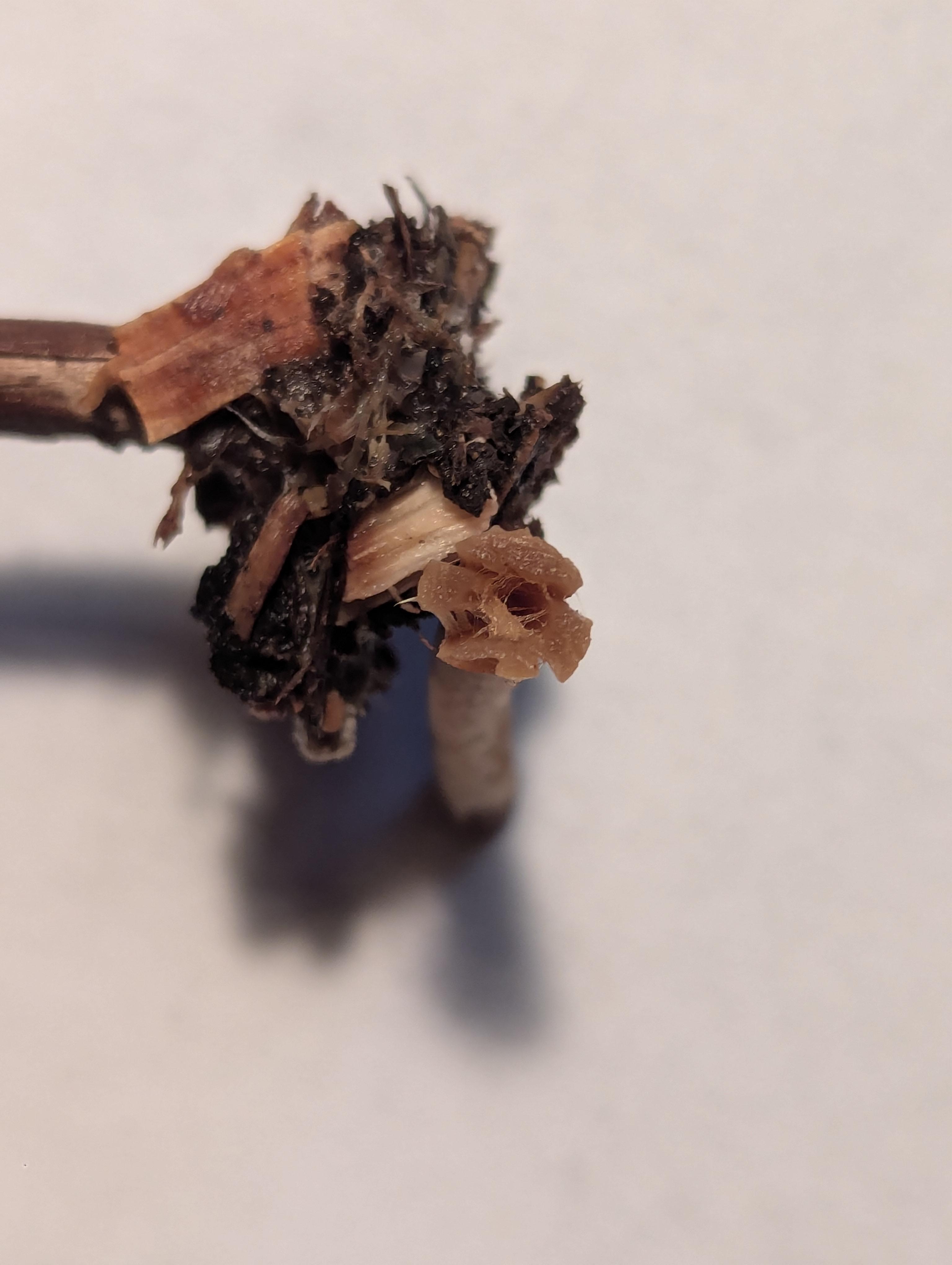
Cross section of the gills — they appear to be adnate, or sub-decurrent:
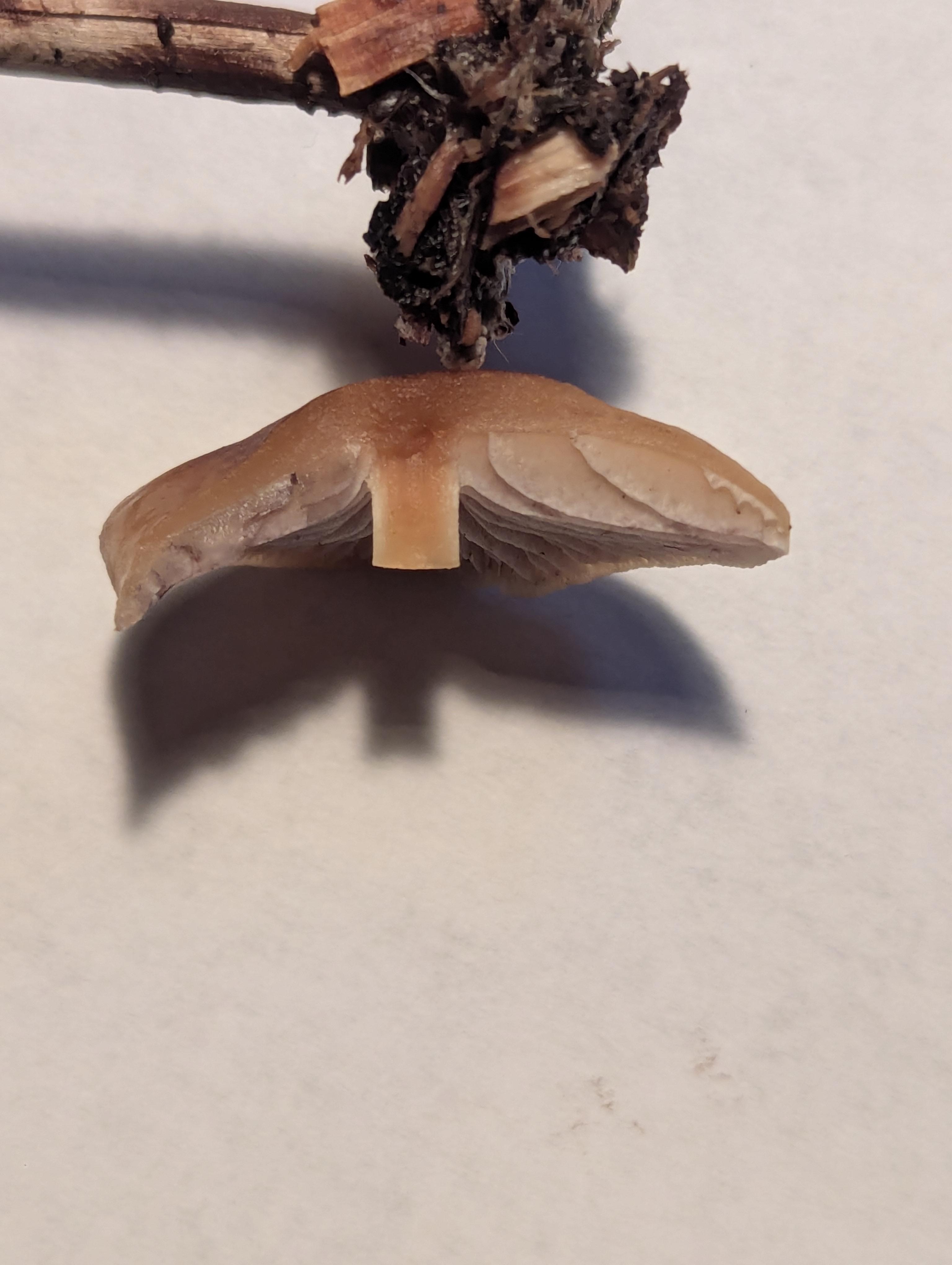
Underside of view of the gills:
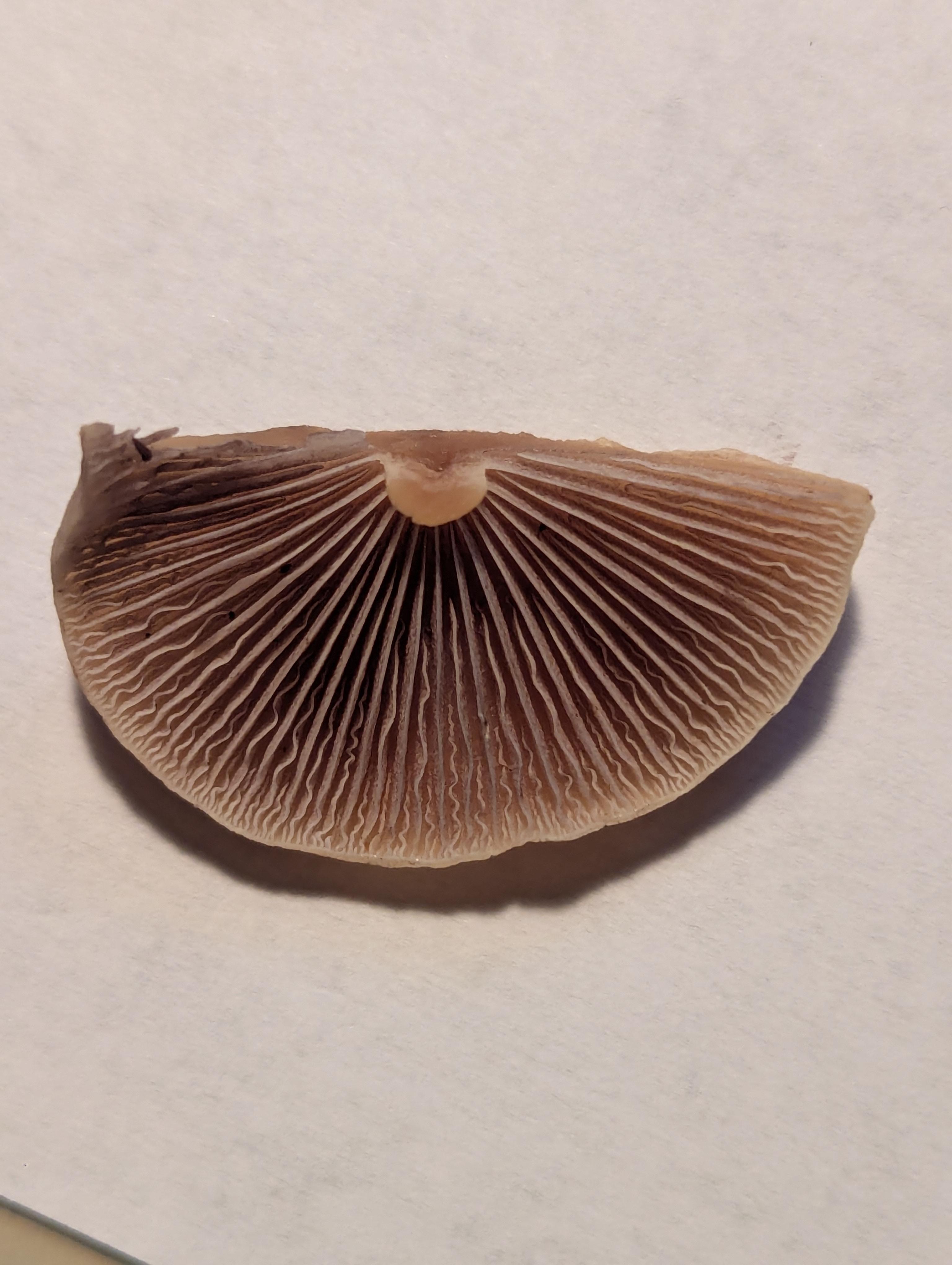
Spore print (first on white background (the split is due to two halves), second on a black background):
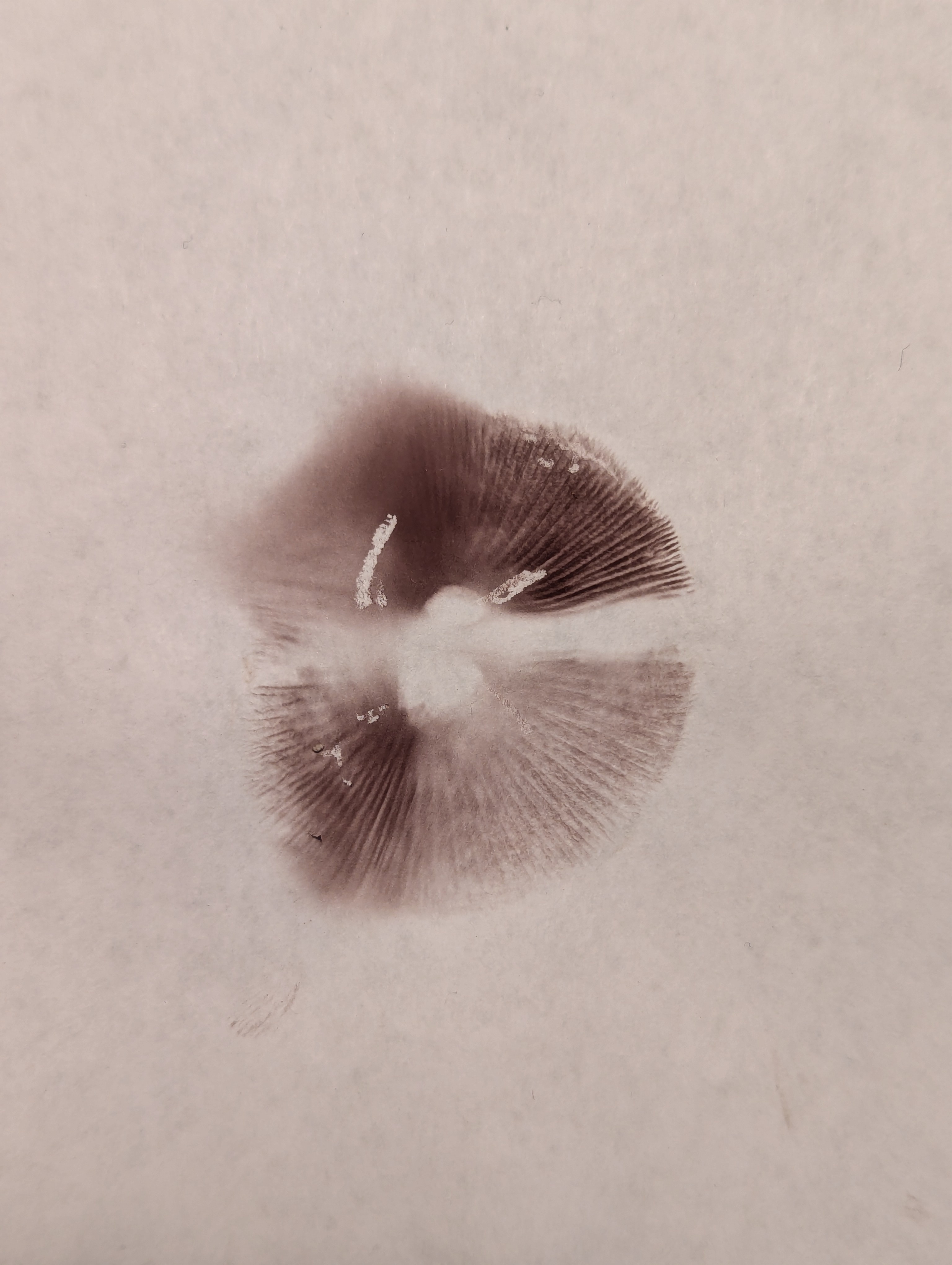
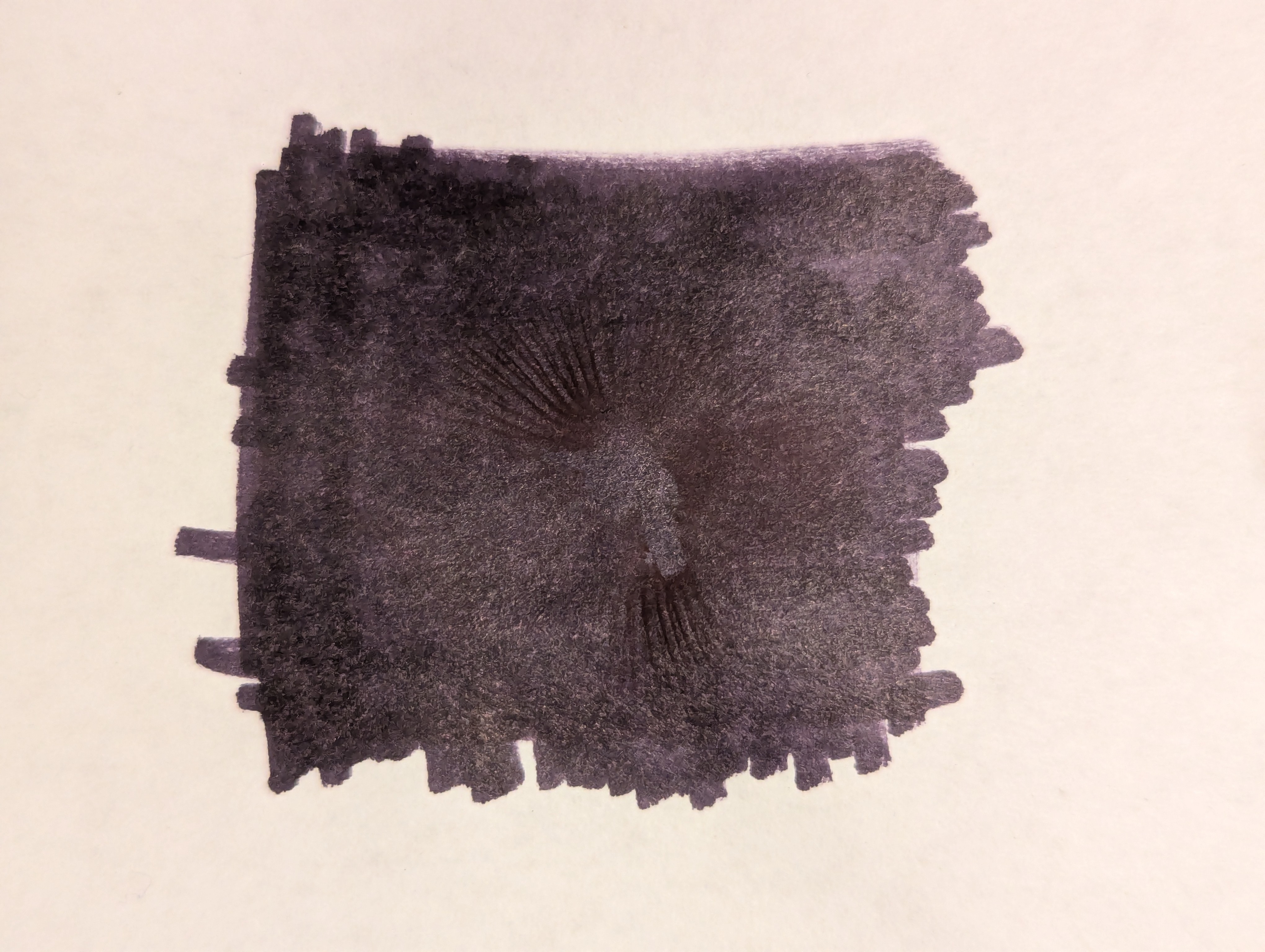
Examples specimens once dried:
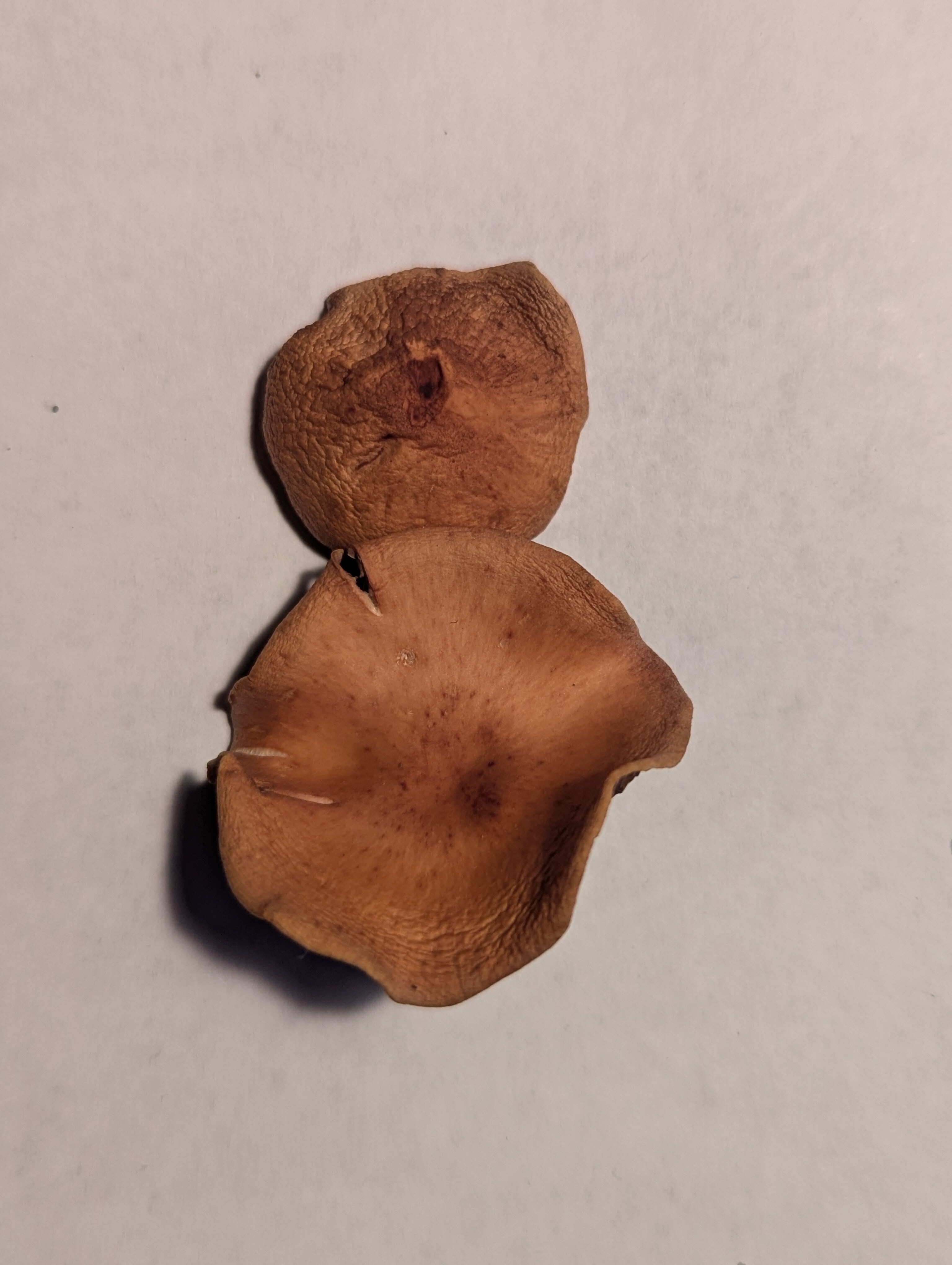
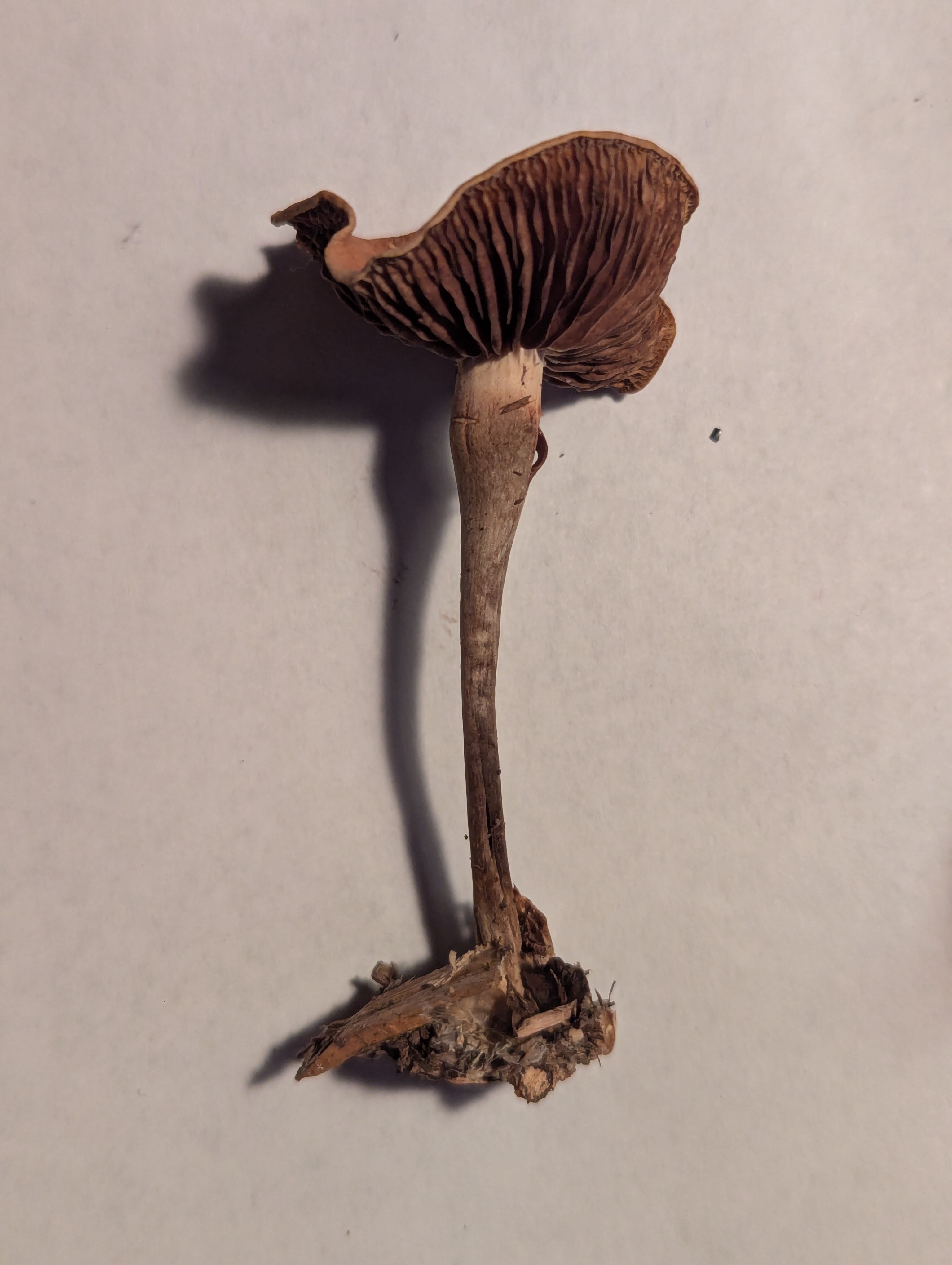
Examples of the colony, and the location/substrate in which it was growing:
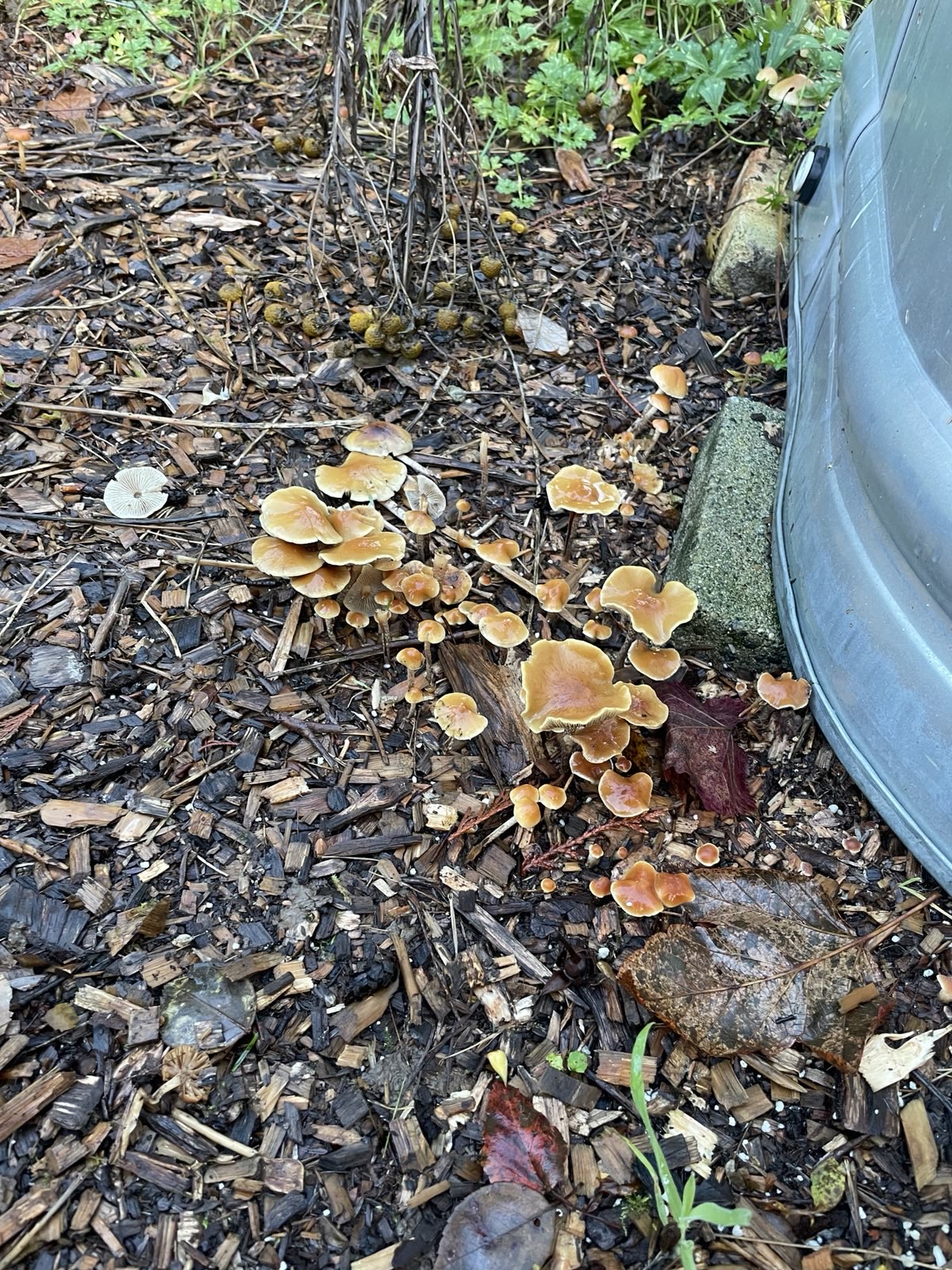

Cross-posts:












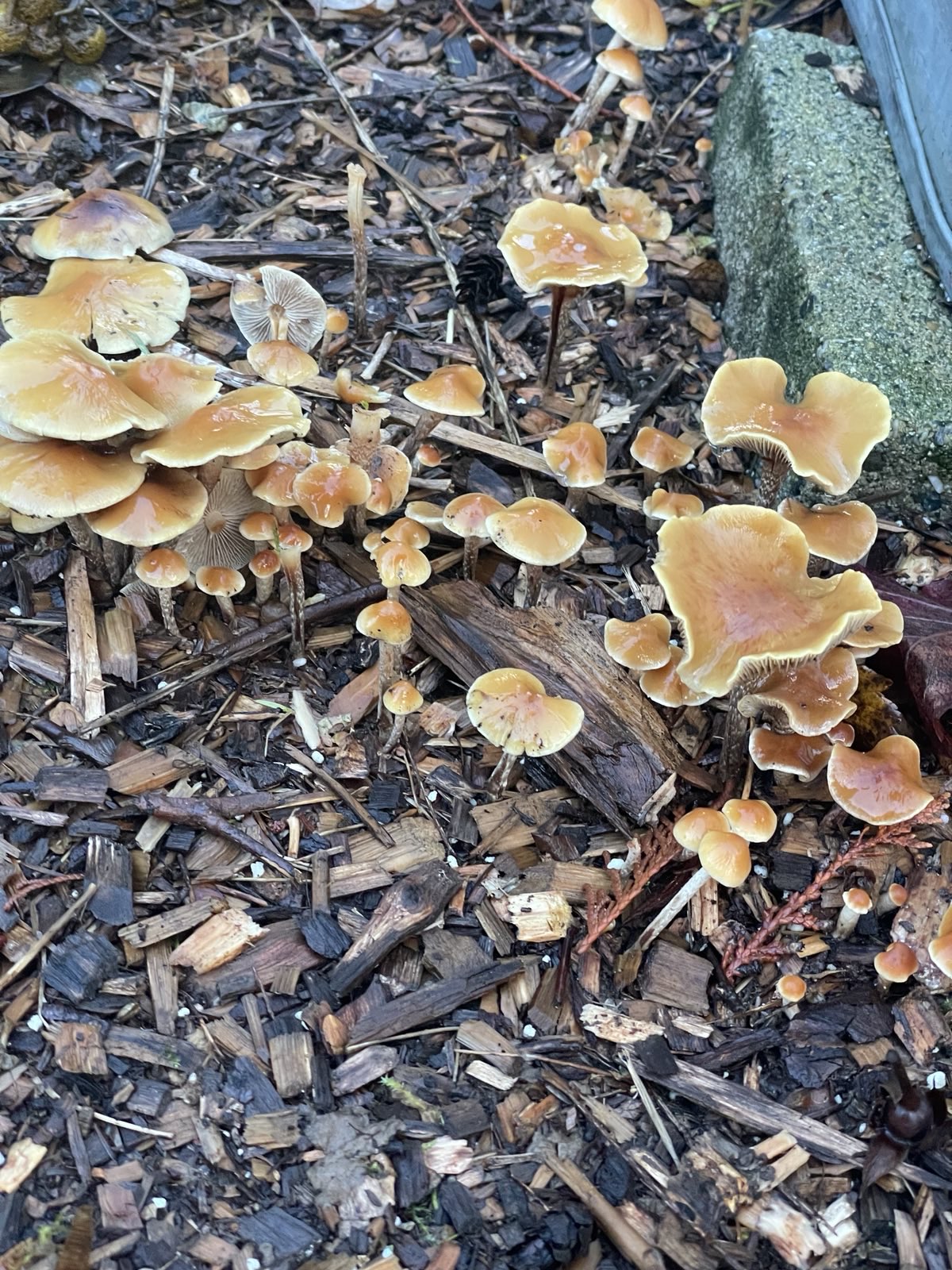
the spore print is also brown here, but should be purple-ish black if it were Psilocybe spp., also the stipe looks wrong for that ID - I would say definitely not Psilocybe cyanescens (not just because they're not bruising blue / purple / black).
@dandelion @Romkslrqusz I concur. Definitely not Psilocybe cyanescens based on various features of the cap and stipe. Generally, in P. cyanescens, there would be a striking contrast between the white stipe and the caramel-colored cap on young specimens with a rubbery cap surface. (I have difficulties with distinguishing spore color on spore prints but kudos on the photos)
@dandelion @Romkslrqusz Psilocybe cyanescens tend to look somewhat even in size, see picture.
Would you by chance have a guess as to what they might actually be?
it's what we call in the field call "LBMs", little brown mushrooms 😆 It's not worth trying to ID to species, and often isn't easy to do. There are certain mushrooms I don't try that for, LBMs and Russulas are often the kinds of mushrooms I don't bother with.
My suggestion is to find a local mycology group where you can join them on forays and learn how to ID mushrooms.